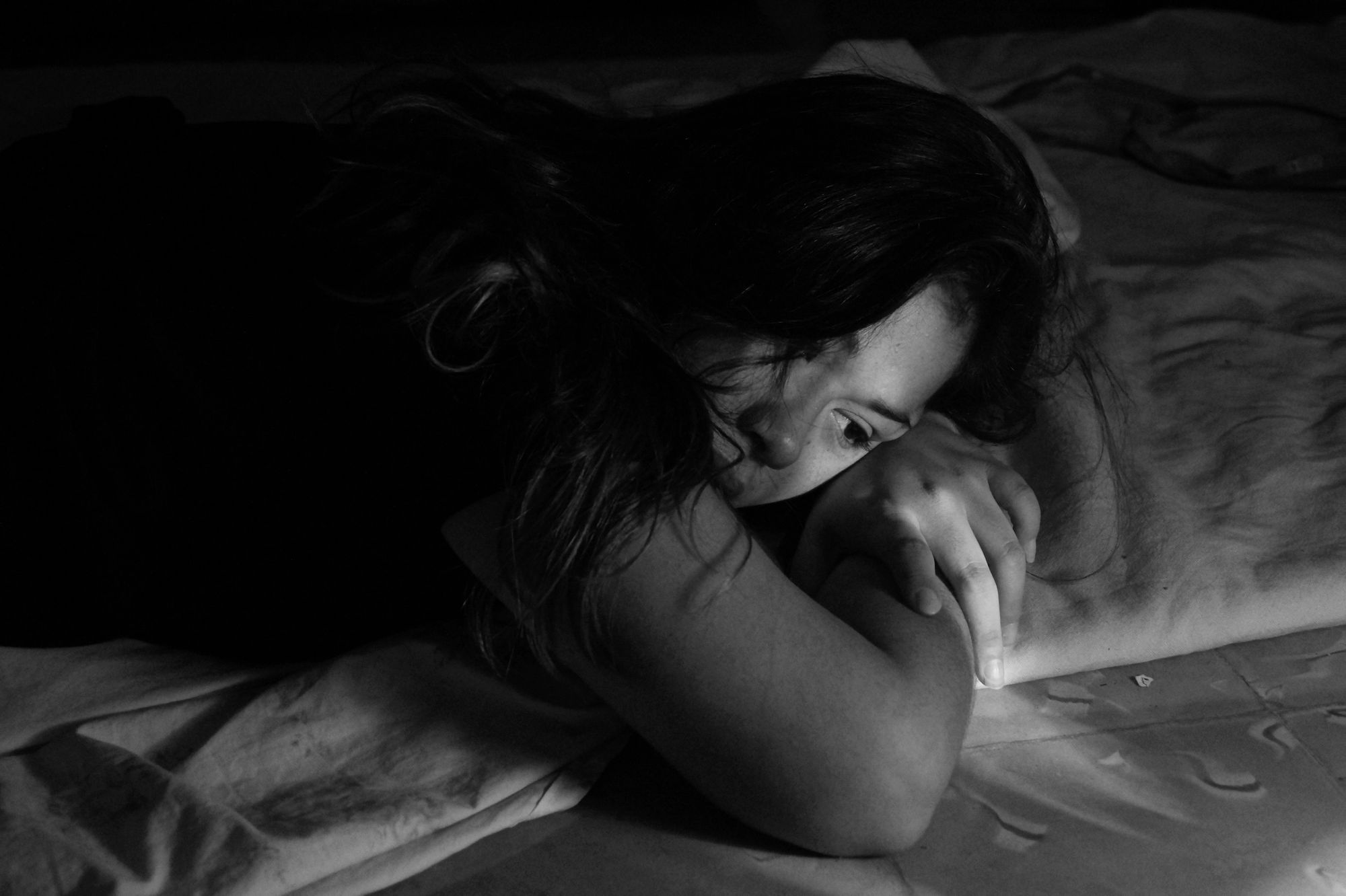Domestic violence (DV), also called intimate partner violence (IPV), domestic abuse, or toxic relationship abuse is a pattern of behaviors used by one partner to maintain power and control over another partner in an intimate relationship.
Domestic violence affects not just the survivors of abuse, but our society as a whole. In the United States, 1 in 3 women and 1 in 7 men are victims of abusive behavior.
It is a silent epidemic and is one of the hardest things that affects everyone in some way. We're here to bring more awareness to the issues and talk about the cycle of abuse and how therapy can help you if you are a victim.

Warning signs of domestic violence
- Extreme and Constant Jealousy
An abusive partner may display overwhelming jealousy, often becoming suspicious of anyone you interact with, including friends and family. This jealousy isn't about love; it's about exerting control over your relationships andisolationyou from others. - Possessiveness
They might treat you like property, insisting on knowing your every move. This can include unannounced visits, excessive texting, or demanding updates on your whereabouts, all designed to restrict your freedom in a controlling relationship. - Unpredictability
The partner's mood swings can be extreme and unpredictable, creating an environment where you feel like you're constantly walking on eggshells, unsure of what will set them off next. This is one of the key signs of a toxic relationship. - Explosive Temper
Outbursts of anger may occur over minor issues, often escalation to verbal abuse, emotional abuse, or physical abuse. These episodes can be followed by apologies, but thecycle of violencetends to repeat, trapping you in a cycle of fear. - Extremely Controlling Behavior
The abuser may monitor your phone, social media, and emails, or try to dictate who you can interact with. This coercive control can extend to other areas of your life, such as where you work, what you wear, and how you spend your time. - Gaslighting
Gaslighting involves manipulating into doubting your own reality. They might deny things they've said or done, accuse you of being overly sensitive, or insist that your memory is faulty, all to make you question your sanity and reliability of your perceptions. - Blaming the Victim for Everything
The abuser shifts all blame onto you, insisting that you're responsible for their actions or that you're the reason they're angry. This victim-blaming tactic is designed to make you feel guilty and responsible for the abuse, keeping you trapped in the relationship. - Sabotage or Obstruction of the Victim's Ability to Work or Attend School
They might interfere with your job or education by causing disruptions, creating conflicts, or even directly preventing you from attending work or classes. This keeps you financially and socially dependent on them. - Control of All Finances
An abusive partner might take control of all money matters, restricting your access to financial resources. This can include monitoring your spending, giving you an allowance, or completely cutting you off from any financial independence. - Accusations of the Victim Flirting with Others or Having an Affair
Even without evidence, they may frequently accuse you of being unfaithful or flirting with others. These accusations are often baseless and serve to make you feel guilty, further isolating you and justifying their controlling relationship behavior. - Control of What the Victim Wears and How They Act
The abuser might dictate your appearance and behavior, criticizing or demanding changes to how you dress, speak, or interact with others. This control is another way to diminish your autonomy and self-expression. - Demeaning the Victim Either Privately or Publicly
They may insult, belittle, or humiliate you, whether in private or in front of others. This behavior is intended to erode your self-esteem and reinforce their dominance in the relationship.
Types of domestic violence
The major misconception about domestic violence is that it is only physical abuse, like hitting, slapping or choking; however, that is just one form of DV.
Forms of domestic violence include:
- Physical abuse
- Emotional abuse
- Psychological abuse
- Sexual abuse
- Financial abuse
Domestic violence does not discriminate. It happens regardless of gender, age, sexual orientation, race or economic background.
The following image, known as the “Power and Control Wheel,” helps explain the numerous ways a domestic abusive situation can be perpetrated.
If some things in a relationship look like red flags, they probably are. Abuse is not an argument every now and then where cruel words are exchanged by both partners. It is a violent relationship and the most dangerous time where one partner or close family members constantly display certain behaviors to obtain all power and control over their partner.
Organizations like https://www.thehotline.org/, https://www.loveisrespect.org/ and https://ncadv.org/ can provide in depth definitions of abuse, and also have hotlines to speak with a trained specialist who can talk to you about the important items in your situation, help find local shelters and provide legal advice to make sure you're making the best decisions for yourself.
Why it’s so hard to leave an abusive relationship
Leaving an abusive relationship is never easy. In most cases the person abusing you is someone you love and care about, like a partner, family member or a trusted friend, and at some point there were good times in the relationship.
Most abusive relationships have what is called the “cycle of abuse” which continues over and over again. The following diagram explains the cycle of abuse and sexual violence, and how it is easy to get caught in this pattern over and over again.
How to leave an abusive relationship
If you are thinking of leaving an abusive relationship, there are a lot of important things to think about like safety planning, whether you are living with abusive people or not.
Leaving is never easy, and often infuriates the abusive narcissist. They often promise they will change, and emotionally manipulate their partner into staying.
Abusers may also say things like “Nobody will ever want you but me,” or “This is all your fault. You make me act like this.”, which is in itself a type of abuse.
Unfortunately, after hearing these abusive remarks over and over again you may have started to believe them. Try to be strong, and remember the abuse is not your fault, and you can and will be wanted and loved.
Planning a safe way to leave a relationship is always a good idea to give you confidence and structure.
Safety plan for leaving an abusive relationship:
Let a friend or family member know you are ending your relationship. Even if you don’t want to tell your friend or family member about the abuse, let them know you are ending your relationship, and need emotional support. Let them know when and where you are ending the relationship, and ask them to check in on you.
- Call a hotline. If you are uncomfortable talking with someone you know, call one of the hotlines and speak with someone who will encourage and support you.
- Keep important documents safe. This includes your passport, birth certificate, health insurance card etc, and those of your children. Keep these in a safe space, preferably out of the home.
- Find a safe place to go, even for a few nights
- Call 911 if your partner hurts you, threatens to hurt you, or threatens to hurt themselves
- Memorize a few emergency contact numbers, in case you leave without your phone.
- Change passwords on electronic devices and social media, as your partner may know your passwords.
- Block your partner from calling or texting you. You may need to be in touch again, but it is best to stop communication right after leaving.
- Prepare emergency funds. This can include emergency money and your own bank account or credit card if possible
- Remind yourself that you do not deserve to be abused. Write down in a journal or somewhere safe why you are important and do not deserve to be abused. Read and reread this to give you strength.
If you believe you are in an abusive relationship, you can get the help and support you need.

Healing from an abusive relationship
Healing from an abusive relationship can be a difficult process. For many, it entails coming to terms with the reality of the relationship, healing from trauma, and regaining self-love and confidence.
Support is out there, including:
- Support groups for victims of domestic violence, which offer not only a therapeutic healing space, but also an opportunity for survivors tell their story to others who can understand and relate. Most victims have been so isolated during the abuse that they need to reconnect with others, and a supportive group of peers is a great place to start.
- Hotlines: Organizations like thehotline.org, loveisrespect.org, and National Coalition Against Domestic Violence (NCADV) offer hotlines to speak with a trained specialist who can talk to you about your situation and provide further resources.
- Therapy: Therapy can help both individuals currently in abusive relationships as well as survivors of domestic violence.
How therapy can help if you are in an abusive relationship
Therapy can provide many supports for survivors of abusive relationships in many ways:
- Education on relationship abuse
- Learning to differentiate abusive vs. healthy relationships
- Treatment for mental health conditions that result from an abusive relationship
- Rebuilding one’s sense of self and self-worth
- A safe space to share scary experiences and feelings of shame
For individuals in abusive relationships, a therapist can provide psychoeducation on relationship abuse, provide a safe and non judgemental space to talk about experiences, and help in connecting them with the help and support they need to leave the relationship.
The reality is that some individuals may not know what a healthy relationship looks like, perhaps from growing up in an environment where abuse was common, and they may not recognize that their relationship is unhealthy. Therapy can help individuals differentiate what an abusive versus healthy relationship looks like, and help them understand that they do not deserve to be abused in any situation.
Survivors of domestic violence often suffer from mental health conditions such as anxiety, depression, low self-worth, and have symptoms of post-traumatic stress disorder, or PTSD. It is very hard for a survivor to be able to trust others, and therapy can help rebuild their sense of self. Many survivors suffer with intense feelings of shame, and do not want to open up to friends and family for fear of judgment.

What to look for in a therapist for help with domestic violence
In looking for a therapist, find someone who understands that domestic violence is about power and control, and has a background working with victims and survivors of DV. In addition, they should have a trauma-informed approach to therapy.
Some individuals think that couples therapy is the answer to domestic violence; however couples therapy is not recommended while the abuse is active. Victims need a safe place for themselves to be as candid and open as possible, and this is not possible with the abuser in the same space.
Love is not about power and control. Everyone deserves a healthy relationship. However, you might not be sure exactly what that looks like, or need help healing after being in an abusive relationship. It can be hard to talk about abuse, as nobody wants to think of themselves as a victim.
Please know that you are not alone, and there is help.
Access free hotlines at: thehotline.org, loveisrespect.org, and National Coalition Against Domestic Violence (NCADV)